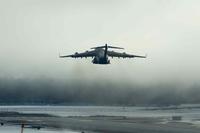A new Defense Department-funded study will examine whether or not to continue running schools on 15 stateside bases as officials search for ways to cut costs.
The study aims to "identify what the feasible options (are) for educating military dependents on CONUS installations," said Charles Goldman, a RAND Corp. researcher who is helping lead the study. "The purpose of the study is to look at what are the possible alternatives in terms of expected cost, quality and implementation ... and determine which options are feasible at each of the installations."
Past studies on the subject encouraged the department to offload some of the then 14 stateside bases on which DoDEA had schools onto the surrounding schools districts. However, most of those recommendations were never carried out largely because of cost, said Joyce Raezer, the head of the National Military Family Association who is intimately familiar with the issue.
For example, she said, the Education Department Impact Aid payment which state-run districts receive for educating military kids does not cover the full expense of schooling the 25,000 students who currently attend DoDEA stateside schools.
Pushing the DoDEA schools onto the districts would require extra DoD funding both immediately and for years to come, she said. Without that funding, both military and civilian kids could suffer.
The last such DoDEA study was conducted in 2003. Of the 14 bases hosting DoDEA schools at the time, that report recommended two be split by grade levels between DoDEA and the state and eight be moved completely. Of those, only one, an elementary school at Werner Robin's Air Force Base, Ga., was ultimately transferred.
DoDEA officials say they are heading into the new study without any expectations.
"The big thing that people should understand is that there are no preconceived outcomes from this study. We don't have any final decisions, we don't know what the study is going to find," said Elaine Kanellis, a DoDEA spokesperson. "I think it's very, very premature to jump to conclusions before the study is finished."
In addition to examining the 60 DoDEA stateside schools, which operate at an annual cost of $375 million, the study will also look at an agreement between four local districts to provide education on nearby bases at an annual cost of $23.3 million. The RAND study is costing the DoD $905,000.
Eighty-five percent of military children are educated at off-base schools or at schools run on base by local districts.
RAND officials said teachers, parents, school principals, base commanders and DoDEA middle and high school students will be contacted to participate in in-depth focus groups for the study. Parents, teachers and students will be selected to participate at random. Those chosen will be sent an invitation to participate in the focus group via postal mail.
Students will be contacted through their parents, RAND researchers said. They said they plan to interview every impacted base commander and principal.
Raezer said studies such as the one currently underway tend to lead to anxiety among teachers who worry they may be out of a job and parents who don't want the DoDEA schools to close or their children to be sent off-base for education.
"The last report was done right at the beginning of the war so there was a lot of anxiety -- a lot of the parents' first reaction was no one understands our kids that DoDEA does," Raezer said. "That first visceral reaction is that we want to keep our kids safe we want to keep our kids on the installation."
However, if past studies are any indicator, the build-up for the study will be much more climactic than the study itself, she said.
"Every study has said the same thing: commanders love those schools, parents love those schools, it would cost too much to transfer them to local communities," she said.



























